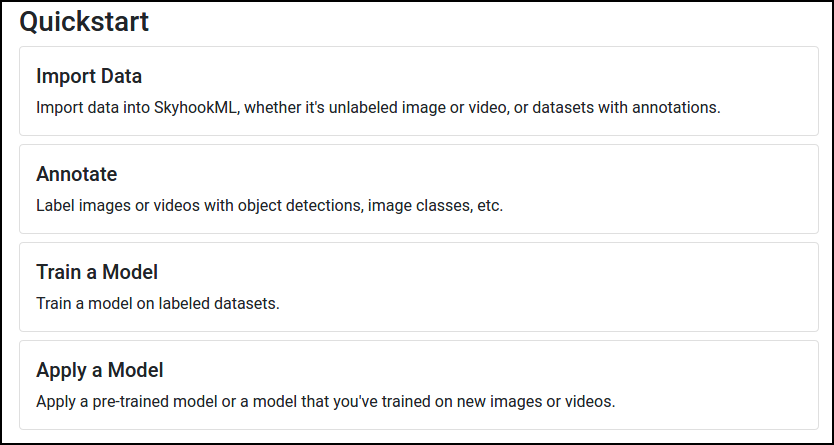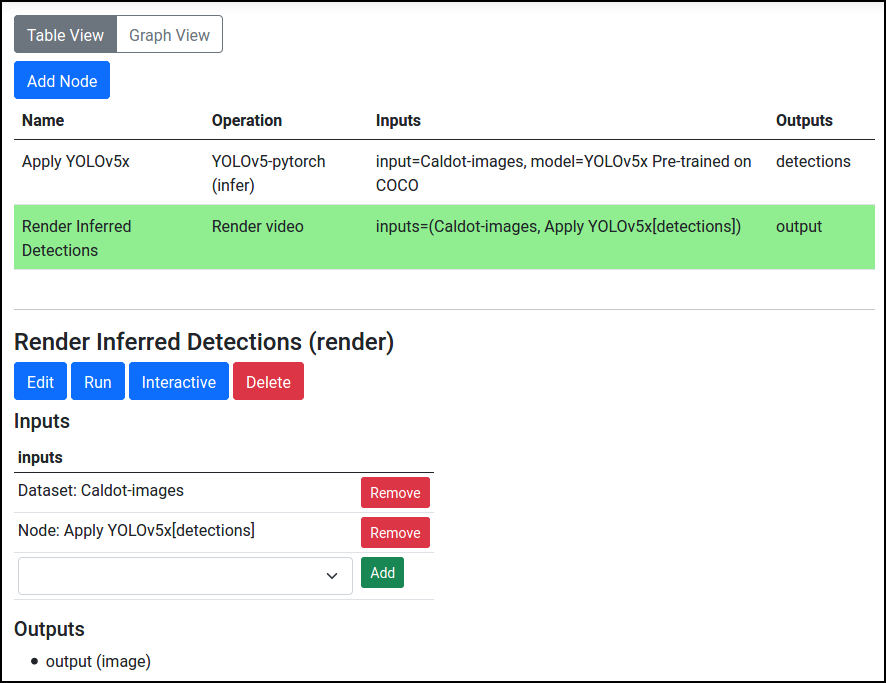Quickstart
Install SkyhookML
The fastest way to get started is with the all-in-one Docker container. First, install nvidia-docker; on Ubuntu:
curl -fsSL https://download.docker.com/linux/ubuntu/gpg | sudo apt-key add -
sudo add-apt-repository "deb [arch=amd64] https://download.docker.com/linux/ubuntu $(lsb_release -cs) stable"
distribution=$(. /etc/os-release;echo $ID$VERSION_ID)
curl -s -L https://nvidia.github.io/nvidia-docker/gpgkey | sudo apt-key add -
curl -s -L https://nvidia.github.io/nvidia-docker/$distribution/nvidia-docker.list | sudo tee /etc/apt/sources.list.d/nvidia-docker.list
sudo apt update && sudo apt install -y docker-ce docker-ce-cli containerd.io nvidia-container-toolkit
sudo systemctl restart docker
Then:
git clone https://github.com/skyhookml/skyhookml.git
cd skyhookml
mkdir -p data/items data/models
docker/allinone/run.sh
Access your deployment at http://localhost:8080.
Note: If you get an error like nvidia-container-cli: initialization error, make sure NVIDIA driver is installed (e.g., sudo apt install nvidia-driver-460; driver version must be >= 450).
Import Data
Next, let's import some video data into Skyhook.
- On your computer, prepare a zip file with some video or image files.
- In Skyhook, press Import Data under Quickstart, and upload the zip file.


Apply a Pre-trained Object Detector
- From Dashboard, press Apply a Model.
- Select Object Detection.
- Select a model and press Add Node.
- Set an input resolution at which the detector should process images.
- Go to Pipeline, select the new node, and press Run.

Visualize the Computed Detections
- From Pipeline, press Add Node.
- Select Render Video under Video Manipulation.
- Select the node, and add the image or video dataset and the object detection outputs as inputs.
- Run the node.
- The outputs can be visualized from Datasets.

